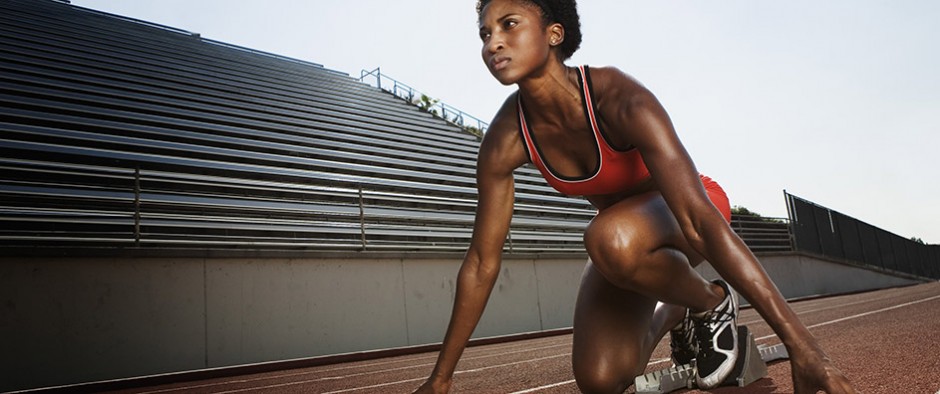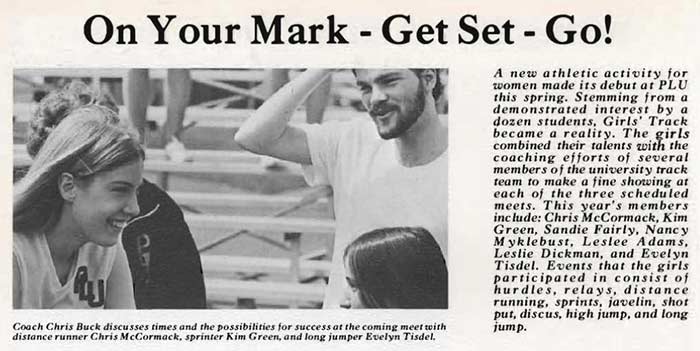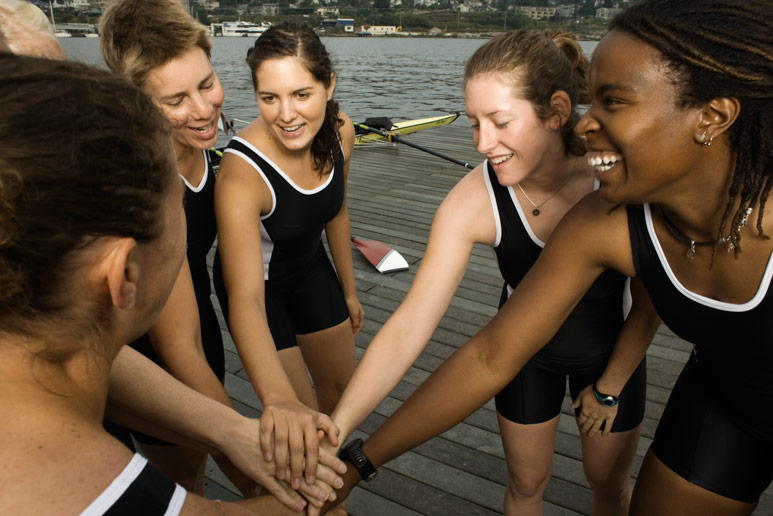The views expressed in our content reflect individual perspectives and do not represent the authoritative views of the Baha'i Faith.

At the dawn of the women’s equality movement in sports, the women I coached wound up teaching me.
I was a junior in college. One day, early in the spring, the head track and field coach, Paul Hoseth, asked me if I’d be willing to serve as the head coach of the very first women’s track and field team at Pacific Lutheran University (Tacoma, Washington). Women’s sports were just beginning to come into their own, even though college “women” were still referred to as “girls.” (More on that later.)
“Why me?” I asked my track coach incredulously. “Well, you see, Chris,” he replied, “PLU hired a qualified woman, a physical education professional, for this position. But she took a job at another university at the last minute, and left us high and dry.” That day, I became “Coach Chris Buck.”
I had to act fast. For sprinting, hurdling and field events, I recruited fellow track teammates to help with the training.
I knew a lot about track and field. After all, I was a physical education major. What I didn’t know was how best to apply the principles of competitive athletic training to women, especially when no one could mentor me. I had to learn on my own, through trial and error.
So, on the first day of their training, I took my distance runners on a run around the edge of PLU’s campus golf course. The very next day, two or three of the women athletes came to me with swollen ankles. “Why? What happened?,” I asked. “Well, Coach, we were trying to imitate your running style.” “What do you mean?” I inquired. “You see, Coach, we watched how you ran. You’d land on the ball of each foot, let your heel touch the ground, and then spring off the ball of your foot again.”
My God, what a revelation! I had personally been training an average of fourteen miles a day, including warm-ups and interval training. When I ran with the women athletes, I did not realize that they intuitively adapted to this style of running. In their dedication to their sport, they not only followed my training instructions, they followed my example.
One day, I was training my middle-distance runners. One of my most dedicated athletes, while running, was swinging her arms from side-to-side. I called the runners together. “You’re running like a lady, not like an athlete!” Then I imitated her running style, exaggerating for effect. I got my point across. The next day, this dedicated athlete was driving her arms powerfully, back and forth, in a perfectly linear, efficient manner.
I was impressed. What a dramatic change — overnight! Little did I know what happened after the previous day’s workout. “When we came back to the locker room,” one of her teammates told me later, “that girl burst into tears.” In caricaturing her “running like a lady” the day before, I had inadvertently made fun of her. But this athlete’s dedication and ability to learn quickly was most impressive. What dedication! What strength of character!
Not only did I act in a sexist way (hopefully more out of unconscious cultural conditioning than from callous insensitivity), the wording in the yearbook write-up was also sexist:
A new athletic activity for women made its debut at PLU this spring. Stemming from a demonstrated interest by a dozen students, Girls’ Track became a reality. The girls combined their talents with the coaching efforts of several members of the University track team …
If “Men’s Track & Field” is the proper designation for college male athletes, then why “Girls’ Track” instead of “Women’s Track”? Sexism aside, the formation of the team was a step in the right direction, a part of the “sports equity” movement in its early days.
One of the great early champions of women’s rights and equality, Abdu’l-Baha, who led the Baha’i Faith from 1892 to 1921, wrote:
His Holiness Baha’u’llah has greatly strengthened the cause of women, and the rights and privileges of women is one of the greatest principles of Abdu’l-Baha. Rest ye assured! Ere long the days shall come when the men addressing the women, shall say: ‘Blessed are ye! Blessed are ye! Verily ye are worthy of every gift. Verily ye deserve to adorn your heads with the crown of everlasting glory, because in sciences and arts, in virtues and perfections ye shall become equal to man, and as regards tenderness of heart and the abundance of mercy and sympathy ye are superior. – Paris Talks, pp. 183–184.
Women will come into their own in all spheres of human life. Just as Abdu’l-Baha predicted that the men of the future would praise women for their achievements, I’d like to offer my personal praise and respect to the women track and field athletes I had the privilege of coaching — Kim Green, Chris McCormack, Evelyn Tisdel, Sandie Fairly, Nancy Myklebust, Leslie Dickman, and any other athletes not mentioned in the yearbook — for their pioneering efforts in achieving sports equity, as they competed for gender equality over four decades ago.

Caption: “Coach Chris Buck discusses times and the possibilities for success at the coming meet with distance runner Chris McCormack, sprinter Kim Green.” In Spring, 1971, a national movement to recognize, fund and promote women’s sports was afoot. The next year, “Coach Buck” would accept the equality of women and men as a religious conviction when he embraced the Baha’i Faith.
©2014 by Christopher Buck.



















Comments
Sign in or create an account
Continue with Facebookor